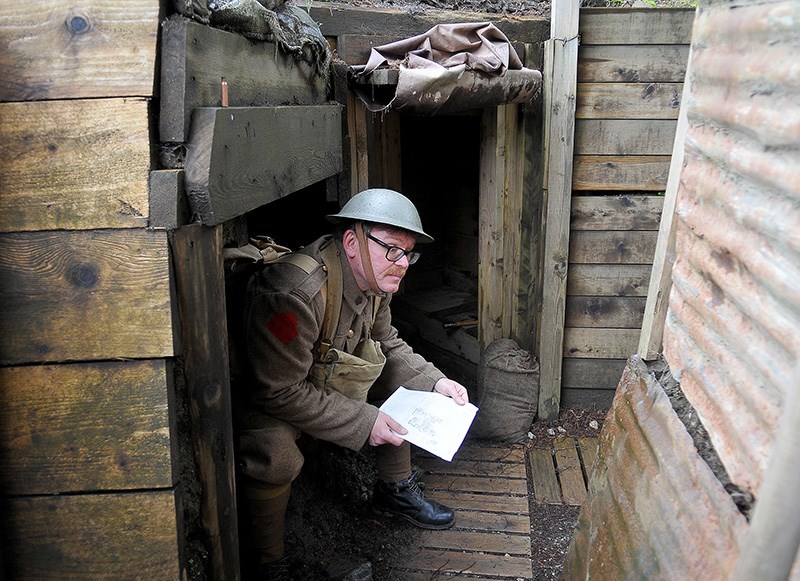War is hell.
It’s also endless hours and days of boredom, punctuated by routine drudgery.
That’s what a group of First World War re-enactors will be demonstrating June 10 at the McKnight Trench at Port Moody Station Museum as part of its 24-Hour Trench Series.
The three-part series (subsequent sessions will be held Aug. 19 and Sept. 16) will give visitors a realistic depiction of daily life in a battlefield trench, said Markus Fahrner, museum co-ordinator.
It’s not all about the battles and bloodshed.
“Most of the time, you simply have nothing to do,” said Fahrner, who’s also one of the re-enactors. “They’re bored.”
For soldiers hunkered down along the Western Front at places like Vimy Ridge, Ypres or St. Quentin, the routine tasks of everyday life — like eating lunch, polishing buttons, having a nap — brought comfort, familiarity with the civilian life they left back home. The difference was that they had to accomplish those tasks in a cramped, muddy, rat-infested trench, covered with fleas and to the constant accompaniment of the gut-pounding thump, thump, thump of distant shell fire.
“You’re in a trench but you want order in your life,” said Fahrner. “You want to be at home.”
To learn about the soldiers’ daily quest for order, Fahrner and his team had to dig past accounts of battlefield heroics. They listened to oral histories from the Imperial War Museum. They also combed books, records and soldiers’ diaries; a simple entry in an officer’s log book about food delivery could offer a clue about how the troops navigated mealtime.
“When you go to original sources, you hear little details that are very fascinating,” he said.
Like chatting parties — that’s when soldiers would gather to trade stories while popping fleas or ticks. Or the logistics of getting lunch, which had to be delivered by runners carrying large, heavy packs through the maze of narrow trenches from canteens far behind the front lines.
Fahrner said soldiers did whatever they could to bring a sense of normalcy to their extraordinary and perilous circumstances. Tradesmen like cobblers and carpenters would fill idle time by repairing boots or building walls because it’s what they knew from home.
“It’s almost like grinning and bearing it,” said Fahrner. “You make do with what you have.”
Most soldiers in the trenches welcomed the discipline of military routine no matter how futile it may have been to keep their buttons shiny and uniforms in order, said Fahrner.
“It gives you something to focus on because if you focus too much on what could happen, you might break.”
But nobody wanted to be assigned to the remote sandbag-reinforced bunker where fuses were installed by hand into grenades “in case something goes wrong,” said Fahrner, his voice trailing off.
The indignities of daily trench life, like sleeping in dirt cubbies called “funk holes” or hauling the contents of frontline latrines to be burned far away from enemy eyes, took a toll even as the soldiers returned to the relative comforts of civilian life.
“No one talked about it. It must change you.”
• To find out more about the McKnight Trench and the 24-Hour trench series, go to www.portmoodymuseum.org/trench.
mbartel@tricitynews.com
@mbartelTC



